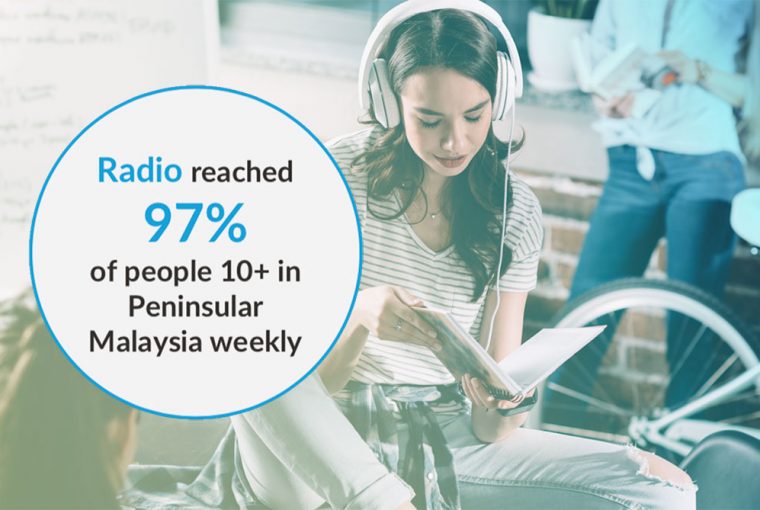In a world dominated by digital media, terrestrial radio continues to hold its ground as an integral part of Malaysians’ daily lives, cutting across age groups, as revealed by the GfK Radio Audience Measurement (RAM) W1, 2023. This insightful data was presented at Radiodays Asia, shedding light on the enduring relevance of radio in Malaysia.
- A Resilient Medium:
The statistics are striking—radio maintains its grip on Malaysia with an impressive 21.4 million people, representing 97% of the population, tuning in weekly. This remarkable reach signifies that radio remains an undeniable force in Malaysian media consumption. - Lengthy Engagement:
Listeners are not just casually tuning in; they are deeply engaged. On average, Malaysians spend an astonishing 12 hours and 55 minutes per week glued to their radios, underscoring the medium’s importance in their daily routines. - A Diverse Audience:
Radio’s appeal cuts across demographics, with 55% of its listeners being working adults. This demonstrates that radio is not just a nostalgic pastime but a relevant source of information and entertainment for the modern workforce. - Peak Listening Hours:
Understanding when listeners tune in is crucial, and RAM data reveals intriguing patterns. Weekday mornings at 8 am see the highest peak, with 8.5 million listeners, while weekends peak at 10 am, with 6.2 million engaged listeners. These peaks align with Malaysians’ daily routines, demonstrating radio’s ability to accompany people throughout their day. - Multi-Device Versatility:
Radio has adapted to the digital age, offering listeners various ways to tune in. Nearly 19.7 million people use traditional FM radio sets, 4.2 million via TV, 3.7 million through mobile phones, and a growing 4% access radio through their PCs. This multi-device approach ensures that radio remains accessible to everyone, regardless of their preferred platform. - The Power of Content:
When choosing a radio station, listeners have clear priorities: music, entertainment, information, news reports, and fun. These factors are considered “very important” by the majority of respondents, emphasising that radio stations must cater to these preferences to maintain their audiences. - Social Media Engagement:
Radio has extended its reach into the digital realm. Nearly 4 in 5 respondents actively interact with radio stations and announcers on social media platforms. They engage by watching videos and viewing photos posted by announcers, discussing music or celebrity news, and sharing their own experiences. This two-way interaction enhances the overall radio experience, creating a sense of community among listeners. - In-Vehicle Entertainment:
The automobile industry has also embraced radio, with 71% of respondents reporting that their vehicles are equipped with in-vehicle infotainment systems. Among these, 78% use FM tuners, 59% connect via Bluetooth to their smartphones, and 50% access radio through dedicated applications available on the infotainment system. This integration ensures that radio remains a constant companion for Malaysians during their daily commutes.
In a rapidly evolving media landscape, radio in Malaysia not only survives but thrives. It remains an ever-present companion for millions of Malaysians, offering entertainment, information, and a sense of community. As radio continues to adapt to changing technology and audience preferences, its future in Malaysia looks brighter than ever.
[ Download PDF ]



